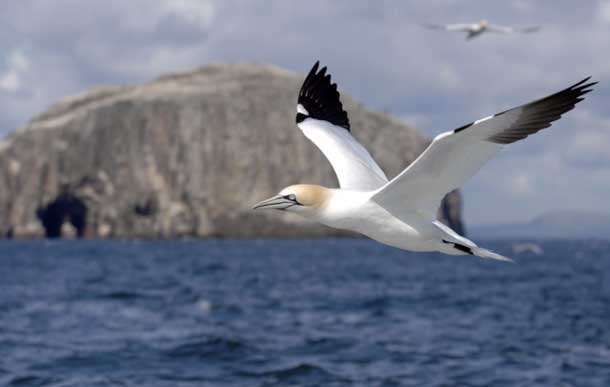 FLORIDA EVERGLADES – Following a very early morning in the pristine Everglades our first water-diving bird was a naturalist’s thrilling view of the amazing Anhinga. The name comes from Brazil capturing the fluid motion of these avian giants. Perhaps a comparison would be saying they are several times larger than Thunder Bay’s black cormorants. Much like our loons, besides, they will dive in and swim under for upwards of twenty minutes.
FLORIDA EVERGLADES – Following a very early morning in the pristine Everglades our first water-diving bird was a naturalist’s thrilling view of the amazing Anhinga. The name comes from Brazil capturing the fluid motion of these avian giants. Perhaps a comparison would be saying they are several times larger than Thunder Bay’s black cormorants. Much like our loons, besides, they will dive in and swim under for upwards of twenty minutes.
While anhingas are best described by Floridians as being pterodactyl-like. They have a most curious routine following their deep dives for food in water. An anhinga will take rest on a tree branch above the glades. Where it immediately fans out it soaked wings. Russell Banks compares their enormous wings to “glistening kites.” It will absolutely hold that position in space seeking the sun’s solar warmth to thoroughly dry out. At that point an anhinga might be viewed as being a welded black metal sculpture. It’s freeze frame pausing captures a dazzling silhouette against the sun.
But there the Anhinga suspends itself. Above the scene in its region where one catches other shoreline water birds. The gently crafted beauty of stick figured stork. A glorious pink spoon-bill. Or, an elegant blue heron. All wade in shoreline waters as they fish.
One also glances across to the first sound before a silent slithering crease on the surface of the water –in another location –where morning alligators glide along. Their two eyes (which have a unique membrane for underwater viewing) seem to float in a film of water. As if their eyes were as light as ping ping balls protected by huge eyelids before this particular amphibian, or another just coming into view now, turns its muzzle into a downward slant. And there, but for the sake of its wake, it disappears. Its activity totally subterranean as it dredges for its first meal of the day.
It was during our aquatic Safari this winter that a fascinating story about one of the foremost diving birds on earth: the enormous Gannets of St. Kilda in the Scottish Hebrides was conveyed to me.
The gannets dive from some of the tallest rock faces anywhere in the United Kingdom. A gannet will streamline its form and race through the air in the shape of a torpedo. With its beak extended; wings and feet tucked straight back. The speed of a gannet may reach up to 62 mph.
At this point our craft was moving past mangrove shores where the manatee call home. While all along a long an outcrop island ahead of us there were hundreds of snowy pelicans nestled in the afternoon sunshine. The temperature was hovering at 90f.
These “snow-balls” as the natives call them are a migrating species that leave the Pacific Northwest, and Oregon, head south making their arrival along the Gold Coast within short weeks of their departure. They often fly, in unison, at altitudes of over 5,000 ft. “And, so there they are,” commented a naturalist with us. He swept his right hand as if making an imaginary line drawing our focus to the sweeping vista of such immense numbers of pelicans. They were National a Geographic photos of the day mixed in with the beauty of tropical vegetation. The blazing panorama of a true blue sky which was only occasionally overlapped by white clouds as puffy as aerial popcorn.
Moving inside this heat the gannet’s story would take us to the windy distant enclaves of the chilly Hebrides.
What came from that seascape was an adventure at sea told by Scottish fishermen.
Occurring right after their vessel had charted a course where the water was teeming with shoals of herring. Massive collections of herring. One sailor felt the water was so densely matted with this wild harvest of herring he could easily remove his boots step from the boat and walk on top of water.
So here they were with northern sea mammals like whales and dolphins all sharing in the bounty. In the sky literally thousands of deep diving birds. Including truly uncountable numbers of gannets.
Well a legendary moment sounded at first like a blast from a rifle. One of the gannets having driven down from the grey element of sky veered too far, too quickly, like a mini Spitfire hellbent for a target, it ploughed right into the hull. Driving its beak clean through the woodwork.
And in the stone cold, violently raw gushing and mashing of Atlantic waves their boat tossed in the middle of nowhere. They were twelve miles from shore.So alarmed at first sight the fishermen reeled at their alternatives. With corpse of the gannet’s wings splayed wide. Measuring at least five feet. What to resort to then?
As they rocked and lifted.Then, sank with the rising intensity of the waves, one of them noticed the gannet’s implosion had hit so deftly hard it was actually like a caulking. It was a virtual waterproof tight: spindle’s plug. Like the stuck corral along the labyrinth of the Corral Reef, on Australia’s eastern seaboard, that once cut through Captain Cook’s ship. Where the corral met the exterior of Cook’s vessel with enough force that, though breaking through the Cook’s hardware, it actually kept things afloat long enough for Cook to make landfall patch the spot.
To share the outcome of the Hebridean episode, their fishing boat turned for a nearer harbour than their own. Likely into a place called Hirta. Though too remote during most other fishing missions it was now the target of their S.O.S.alternative for being released from these arduous elements.
The way through the endless mounting of raucous wave after wave was, in the end, actually gaining with the dazzling–mind boggling–deep thrust of the gannet’s beak. For it was acting like a keel knifing them onwards, and upwards to where they wished to be. It’s mechanical placement was, “ridiculously perfect. Couldn’t have been designed by the gods of our Norse sea more appropriately,” reported one of the mariners later. In the ways of sea dwellers that become lessons. And in lessons that become gilded lifetime chapters to live by; as they were making their landfall the weather grew bleaker. The timing of everything was becoming epic. Those at Hirta were in raptures providing their last helping hands to lift the fishermen clearly to safety. Their boots must have had eyes attached as they walked the wind swept storm smitten shoreline of rocks to the warmth of the first cottage.
And so as humans their sea faring miracle lives on to this day. A new generation who freshen that unforeseen –yet such an affirmative saga– with every new ver-shun (as the Gaels say: version) in speaking about it.
And as we disembarked from our day long Safari that covered rather incredible mileage across the watery channels of the Everglades; I thought of a time where an unexpected experience with Nature really leaves its impression
In our region one winter, inside an Arctic freeze lasting several nights, one I was bundled well on a chilly, eerily windy, walkabout. Checking on things along our timberline. It felt good knowing a rather buttery sun was attempting to lift itself on a nearby horizon.
However upturned in its plummet, in the last snowfall before the bleakness of what engulfed us, there were signs of some of the finest earth-toned feathers one might ever imagine seeing in a bird. They were part and parcel to a woodland ruff grouse.
This creature not at all like those diving birds of the glades or the Hebrides had likely been flying full bore anticipating a route through the mirage of our woods reflected in a window. It would have been stunned slamming into a thermal pane of glass. It came to rest on its side like a small hen in a pure white nest of snow. Frozen in time. No signs of malice other than the severity of its demise in fatal impact.
With gloves I soon carried it to a resting place along our granite rock wall. I cupped out a snowy cauldron shape and set it un. Not far from our garden sculpture. Mumbled a few thoughts to myself about the sometimes cruelty of the North. I used mittened hands to seal its last location with more snow. Thought of the Celtic poet who once said, at times something beautiful has no enemy other than when its time has finally come. And then do we realize the world has more weeping than you will ever know.
Ronn Hartviksen






